Pirate-Themed Crafts for Adventure-seeking Kids
Ahoy there, mateys! If you're on the lookout for some thrilling, hands-on activities that will set your child's imagination sailing, you've docked at the right port! Pirate-themed crafts are not just about cutting and gluing; they’re gateways to an ocean of creativity and adventure. Imagine your kids donning their pirate hats, wielding makeshift swords, and embarking on treasure hunts that spark their storytelling abilities. These crafts are perfect for enhancing fine motor skills while also encouraging imaginative play. So, grab your crafting supplies and let’s dive into a world of swashbuckling fun!
Making pirate hats is a fun and simple craft that encourages creativity. Picture your little ones transforming into fierce pirates as they personalize their hats with colorful decorations! Using materials like black construction paper, scissors, and glue, kids can cut out hat shapes and adorn them with stickers, feathers, or even drawings of their favorite pirate symbols. This craft not only allows them to express their artistic flair but also helps them immerse themselves in their pirate adventures. Just imagine the joy on their faces as they wear their unique creations, ready to conquer the high seas of their imagination!
Kids can create their own treasure maps, fostering storytelling and imaginative play. This craft allows them to explore geography while incorporating their unique adventures and discoveries. By using materials like parchment paper, markers, and stickers, they can craft intricate maps that lead to hidden treasures. The thrill of drawing paths, marking 'X' spots, and adding whimsical landmarks makes this activity both educational and entertaining. It’s like turning their backyard into a mysterious island filled with secrets waiting to be uncovered!
Gathering materials like parchment paper, markers, and stickers enhances the treasure map-making experience. Here’s a quick table to help you gather what you need:
| Materials | Purpose |
|---|---|
| Parchment Paper | For creating the map base |
| Markers | For drawing paths and landmarks |
| Stickers | Add fun elements like treasure chests or pirate symbols |
Incorporating clues and landmarks into their maps makes the adventure more engaging. Kids can brainstorm creative ideas that lead to hidden treasures, enhancing their problem-solving skills. Perhaps a riddle that leads to the swing set or a clue hidden under a rock? The possibilities are endless! This not only makes the craft interactive but also encourages teamwork as they collaborate on their treasure-hunting quests.
Decorating maps with pirate symbols like skulls and crossbones adds flair. This encourages children to research pirate lore, enriching their craft experience with historical knowledge. They might discover fascinating tales of famous pirates or the significance of various symbols, making their maps not just a craft but also a mini-history lesson!
Once completed, kids can share their treasure maps with friends or family. This activity promotes social interaction and storytelling, making their pirate adventures even more exciting. Imagine a backyard treasure hunt where each child follows a different map, leading to a treasure trove of goodies! It’s a fantastic way to bring friends together and foster creativity in a group setting.
Kids can design their own pirate flags, allowing them to express individuality. This craft combines creativity with an understanding of symbolism, as they choose designs that represent their pirate persona. Whether it’s a fearsome skull or a colorful parrot, each flag tells a story about its creator. Plus, it’s a great way to teach kids about the importance of flags in history and how they represent different factions!
Exploring different designs for pirate flags helps children learn about creativity and symbolism. They can select colors and shapes that resonate with their unique pirate identity. This process of selection encourages them to think critically about what their flag represents, making it a thoughtful and engaging craft.
Building a flagpole from simple materials adds another layer to this craft. It teaches kids basic construction skills while enhancing the presentation of their pirate flags. Using materials like sticks, cardboard tubes, or even dowels, they can create a sturdy flagpole that proudly displays their creation. It’s not just a craft; it’s a lesson in engineering and design!
Creating pirate costumes allows kids to fully immerse themselves in their pirate adventures. This craft promotes imaginative play and encourages teamwork when they collaborate on costume creation. Using fabric scraps, old clothes, and various accessories, they can design outfits that would make even the most seasoned pirate proud. From eye patches to bandanas, the possibilities are endless!
Selecting materials for pirate costumes, such as fabric scraps and accessories, encourages resourcefulness. Kids can learn to repurpose items, fostering creativity and sustainability. This not only makes the crafting process more fun but also instills valuable lessons about reusing and recycling materials.
Adding props like swords and eye patches enhances the pirate experience. This encourages imaginative play, allowing children to enact their pirate stories with confidence and flair. Whether they’re battling sea monsters or searching for buried treasure, these props make their adventures come to life!
Q: What age group are these crafts suitable for?
A: These crafts are perfect for kids aged 5 and up, but younger children can participate with adult supervision.
Q: How long do these crafts typically take?
A: Each craft can take anywhere from 30 minutes to a couple of hours, depending on the complexity and the child's engagement.
Q: Can these crafts be done indoors?
A: Absolutely! While they can be done outdoors for added adventure, these crafts are perfect for indoor fun as well.

Creating Pirate Hats
Making pirate hats is a fun and simple craft that encourages creativity and sparks the imagination of young adventurers. Picture this: your little ones, dressed in their best pirate attire, ready to set sail on the high seas, all while wearing a hat they've crafted themselves! It's not just about putting on a hat; it's about immersing themselves in a world of swashbuckling adventures and treasure hunts. With just a few materials and a sprinkle of creativity, children can create their own unique headgear that reflects their pirate persona.
To get started, gather some basic materials. You'll need:
- Cardboard or construction paper
- Scissors
- Glue or tape
- Markers, crayons, or paint
- Decorative items like stickers, feathers, or jewels
Once the materials are ready, the real fun begins! Kids can cut the cardboard into a wide triangle shape, which will serve as the base of their pirate hat. Encourage them to decorate their hats with bold colors and designs that represent their pirate spirit. They can add skulls, crossbones, or even their own names to personalize their creations. This process not only enhances their fine motor skills but also allows them to express their individuality.
As they create, ask them questions like, "What kind of pirate are you?" or "What adventures will you go on with this hat?" This dialogue fosters storytelling and imaginative play, making the crafting experience even more enriching. When the hats are complete, it's time for a grand unveiling! Kids can showcase their creations during a pirate-themed party or even a backyard adventure, where they can enact their pirate roles with pride.
In addition to being a fun activity, creating pirate hats can also be an educational experience. Discuss the history of pirates and their iconic attire. This can lead to fascinating conversations about famous pirates, their adventures, and the legends that surround them. By integrating history into the craft, children not only enjoy the process but also learn something new!
So, gather your materials, unleash your creativity, and let the pirate adventures begin with these fantastic hats! Every hat tells a story, and every story is a new adventure waiting to unfold.
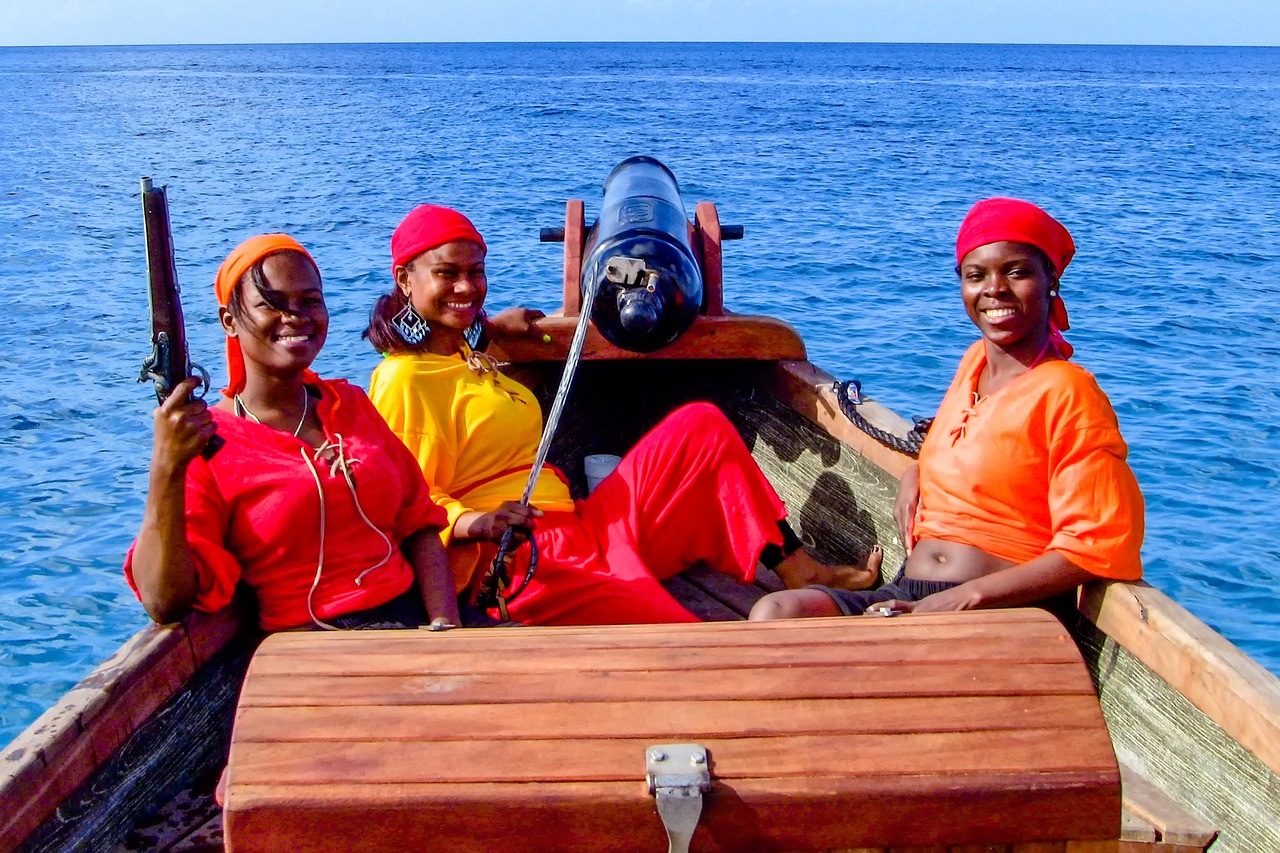
Designing Treasure Maps
Ahoy there, young adventurers! Designing treasure maps is not just a craft; it’s a gateway to a world of imagination and storytelling. Picture this: your child, armed with a pencil and a vivid imagination, plotting out secret locations, hidden treasures, and mysterious landmarks. This creative endeavor not only fosters their artistic skills but also enhances their understanding of geography and narrative structure. As they embark on this mapping journey, they can weave tales of daring pirates and hidden gold, making each map a unique adventure waiting to unfold.
To kick off their treasure map adventure, kids can gather some essential materials. Here’s a quick list of what they might need:
- Parchment paper or brown butcher paper for that authentic aged look
- Markers and colored pencils to bring their maps to life
- Stickers or stamps for added flair
- Tea bags or coffee for aging the paper (with adult supervision, of course!)
Once they have their supplies, the real fun begins! Kids can start by sketching out their maps, deciding on the layout of their pirate islands. They can create a legend, marking important places like “X” for treasure spots, “C” for caves, or “S” for secret hideouts. Encouraging them to think about the geography of their imaginary world—mountains, rivers, and forests—will help them understand spatial relationships and storytelling.
Gathering materials like parchment paper, markers, and stickers enhances the treasure map-making experience. Using various supplies encourages creativity and ensures every map is one-of-a-kind. The tactile experience of using different materials can inspire new ideas and spark their creativity. For example, they might use a piece of fabric for a treasure chest or cut out images from magazines to represent different landmarks.
Incorporating clues and landmarks into their maps makes the adventure more engaging. Children can brainstorm creative ideas that lead to hidden treasures, enhancing their problem-solving skills. Perhaps they might include a riddle that must be solved to find the treasure, or a series of clues that lead from one landmark to another. This element of mystery keeps the adventure alive and encourages them to think critically about how to guide their friends on the hunt.
Decorating maps with pirate symbols like skulls and crossbones adds flair. This encourages children to research pirate lore, enriching their craft experience with historical knowledge. They can learn about famous pirates, their ships, and the myths surrounding treasure hunting. By understanding the symbols they use, kids can create a more authentic and exciting treasure map, making their craft not just fun, but educational too!
Once completed, kids can share their treasure maps with friends or family. This activity promotes social interaction and storytelling, making their pirate adventures even more exciting. Imagine the thrill of watching friends embark on a treasure hunt, following the clues laid out on a beautifully crafted map! Sharing their creations not only boosts their confidence but also fosters a sense of community as they engage in imaginative play together.
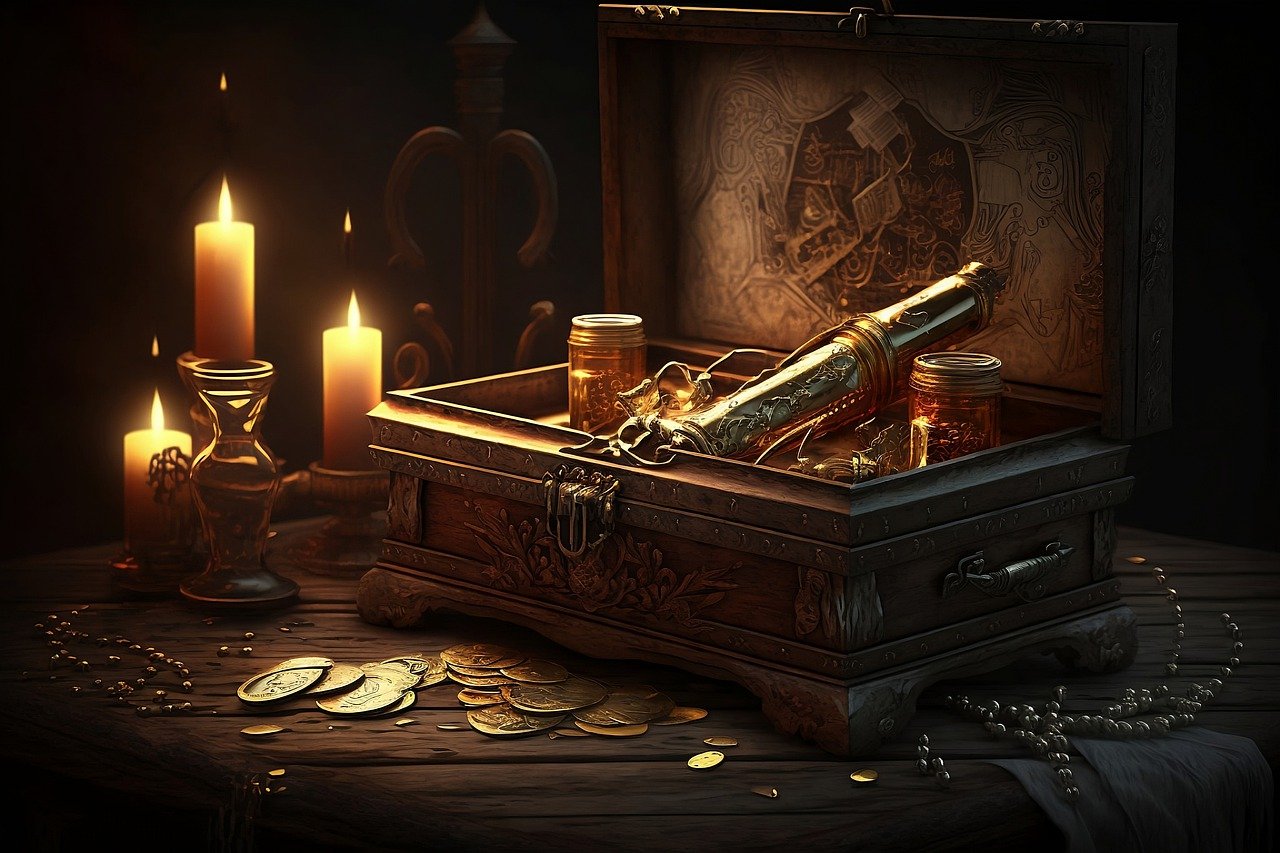
Materials Needed for Treasure Maps
Discover exciting and creative pirate-themed crafts that will engage children in imaginative play. These projects are perfect for enhancing fine motor skills while sparking adventure and creativity.
Making pirate hats is a fun and simple craft that encourages creativity. Kids can personalize their hats with decorations, helping them immerse themselves in their pirate adventures.
Kids can create their own treasure maps, fostering storytelling and imaginative play. This craft allows them to explore geography while incorporating their unique adventures and discoveries.
Gathering the right materials is essential for creating captivating treasure maps. The excitement begins with the choice of paper; parchment paper gives a classic, adventurous feel, while colored paper can add a vibrant touch. Markers of various colors are crucial for drawing paths, landmarks, and decorations. Additionally, stickers can serve as fun embellishments, making each map unique and personal.
Here’s a quick overview of materials that can enhance the treasure map-making experience:
| Material | Purpose |
|---|---|
| Parchment Paper | For a classic, aged look |
| Markers | To draw paths and landmarks |
| Stickers | For decoration and personalization |
| Scissors | To cut out map shapes |
| Glue | To attach decorations |
Using a mix of materials not only enhances creativity but also ensures that every treasure map is one-of-a-kind. Encourage kids to think outside the box and use items they might find around the house, such as old magazines for collage elements, or even natural elements like leaves and small twigs for added texture. The more varied the materials, the more adventurous the map will feel!
Incorporating clues and landmarks into their maps makes the adventure more engaging. Kids can brainstorm creative ideas that lead to hidden treasures, enhancing their problem-solving skills.
Decorating maps with pirate symbols like skulls and crossbones adds flair. This encourages children to research pirate lore, enriching their craft experience with historical knowledge.
Once completed, kids can share their treasure maps with friends or family. This activity promotes social interaction and storytelling, making their pirate adventures even more exciting.
Kids can design their own pirate flags, allowing them to express individuality. This craft combines creativity with an understanding of symbolism, as they choose designs that represent their pirate persona.
Exploring different designs for pirate flags helps children learn about creativity and symbolism. They can select colors and shapes that resonate with their unique pirate identity.
Building a flagpole from simple materials adds another layer to this craft. It teaches kids basic construction skills while enhancing the presentation of their pirate flags.
Creating pirate costumes allows kids to fully immerse themselves in their pirate adventures. This craft promotes imaginative play and encourages teamwork when they collaborate on costume creation.
Selecting materials for pirate costumes, such as fabric scraps and accessories, encourages resourcefulness. Kids can learn to repurpose items, fostering creativity and sustainability.
Adding props like swords and eye patches enhances the pirate experience. This encourages imaginative play, allowing children to enact their pirate stories with confidence and flair.
- What age group is suitable for pirate-themed crafts?
These crafts are ideal for children aged 5 and up, but younger kids can participate with adult supervision. - Can these crafts be done indoors?
Absolutely! Most of these crafts can be done indoors, making them perfect for rainy days. - Are the materials expensive?
Not at all! Most materials are inexpensive and can often be found around the house or at local craft stores. - How can I make these crafts educational?
You can incorporate lessons on history, geography, or storytelling to enhance the learning experience.
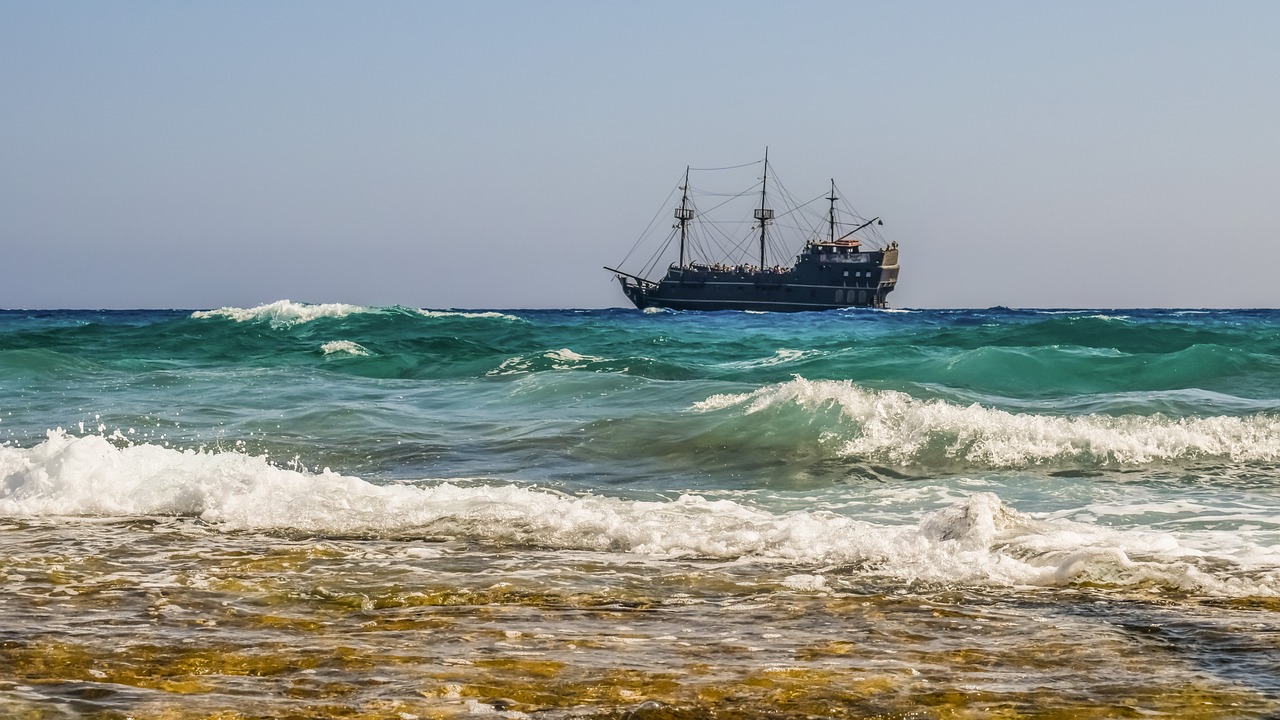
Adding Clues and Landmarks
When it comes to crafting treasure maps, the real magic happens when kids start . This is where their imagination can truly run wild! Imagine the thrill of discovering a hidden treasure, guided only by a map filled with mysterious symbols and clever hints. By incorporating clues, children not only enhance their storytelling skills but also engage in critical thinking as they devise ways to lead their friends on a treasure hunt. What could be more exciting than that?
To make the treasure maps even more engaging, kids can brainstorm a variety of clues that might lead to the treasure. For example, they could create riddles or simple directions like “Three steps to the left of the big oak tree” or “Underneath the rock shaped like a skull.” These clues can be written in a playful tone, adding to the sense of adventure. Imagine a treasure map that reads, “Beware of the dragon guarding the gold!”—how fun would that be?
Landmarks are equally important in this treasure-hunting journey. Children can draw or write about significant locations on their maps, such as:
- The Enchanted Forest - A place where magical creatures might dwell.
- The Pirate's Cove - A secret hideout where pirates stash their loot.
- The Lost Island - A mythical land that holds the greatest treasures.
By adding these landmarks, kids can create a rich narrative around their maps. They can even assign unique names to each location, sparking further creativity. Perhaps they’ll invent a backstory about how the pirate captain once sailed through treacherous waters to reach the island, leaving behind clues for future adventurers.
Encouraging children to think about clues and landmarks not only makes the treasure map more interactive but also helps them develop problem-solving skills. They learn to think critically about how to make their maps challenging yet fun for others. It’s about crafting an experience that goes beyond just drawing lines and symbols; it’s about building a world filled with adventure and mystery. So, grab those markers and let the treasure-hunting begin!
Q: What age group is suitable for these pirate-themed crafts?
A: These crafts are perfect for children aged 5 and up, but younger kids can participate with adult supervision to help with cutting and using materials.
Q: Do I need special materials for these crafts?
A: Not at all! Most materials can be found around the house, such as paper, markers, and fabric scraps. You can also visit a craft store for additional supplies.
Q: How can I encourage my child to be creative while crafting?
A: Encourage open-ended questions and let your child take the lead in their designs. Ask them about their pirate persona and what adventures they imagine, allowing their creativity to flow freely.
Q: Can these crafts be done in a group setting?
A: Absolutely! These crafts are great for playdates, parties, or classroom activities. Kids can collaborate on their maps and costumes, enhancing social skills while having fun.
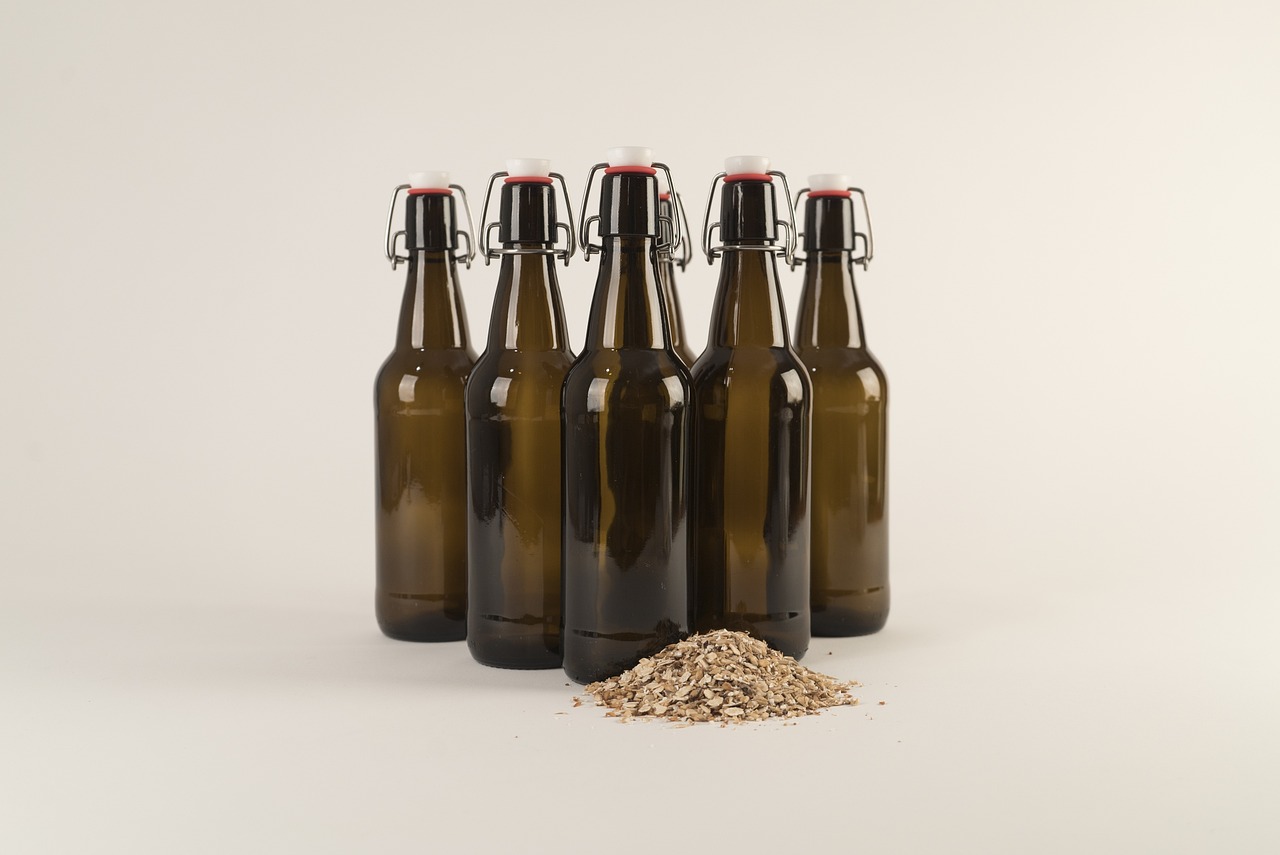
Decorating with Pirate Symbols
Decorating treasure maps with pirate symbols is not just a fun activity; it’s an opportunity for kids to dive deep into the intriguing world of pirate lore. Imagine the excitement as they transform their maps into a treasure trove of creativity! Symbols like skulls and crossbones, treasure chests, and even pirate ships can add a thrilling touch to their creations. These visuals not only make the maps more appealing but also serve as a gateway to learning about the history and mythology surrounding pirates.
When kids start to think about which symbols to include, they can explore a variety of options, each representing different aspects of pirate life. For instance, a skull and crossbones might symbolize danger or a warning, while a treasure chest could represent adventure and the thrill of discovery. This exploration fosters critical thinking as children consider what each symbol means and how it relates to their own pirate stories.
Here are some popular pirate symbols that kids might enjoy incorporating into their maps:
- Skull and Crossbones: The classic symbol of piracy, representing danger and adventure.
- Treasure Chest: A symbol of riches and the ultimate goal of any pirate adventure.
- Compass Rose: Represents navigation and exploration on the high seas.
- Pirate Ship: A reminder of the vessels that carried pirates on their daring escapades.
- Map Markers: X marks the spot! Essential for indicating where treasures are buried.
Encouraging children to research these symbols can also enhance their learning experience. They can discover the historical significance behind each symbol and even create a small legend or key that explains what each symbol represents on their map. This not only enriches their craft but also promotes literacy and comprehension skills.
To make the decorating process even more engaging, kids can use a variety of materials to create their symbols. For example, they can cut out shapes from colored paper, use stickers, or even draw directly on their maps with markers. The use of different textures and colors will make their maps stand out and feel more personalized. Additionally, using materials like glitter or metallic paint can add a touch of magic, making their pirate maps truly unique.
In conclusion, decorating with pirate symbols not only enhances the visual appeal of treasure maps but also enriches the crafting experience. It encourages kids to think creatively, learn about history, and express their individuality. As they embark on this artistic journey, they’ll be sure to create maps that are not only beautiful but also filled with stories waiting to be told!
Q: What materials do I need to decorate pirate maps?
A: You can use markers, colored pencils, stickers, glitter, and even fabric scraps to create unique symbols and designs.
Q: How can I encourage my kids to learn more about pirate symbols?
A: Encourage them to research online or read books about pirates. Discuss the meanings behind different symbols and how they were used in pirate lore.
Q: Can we use recycled materials for this craft?
A: Absolutely! Using recycled materials not only promotes sustainability but also fosters creativity. Fabric scraps, old magazines, and cardboard can all be transformed into pirate symbols.
Q: What if my child is not artistic?
A: Art is about expression, not perfection! Encourage them to try their best and remind them that creativity comes in many forms. Everyone can create something special!
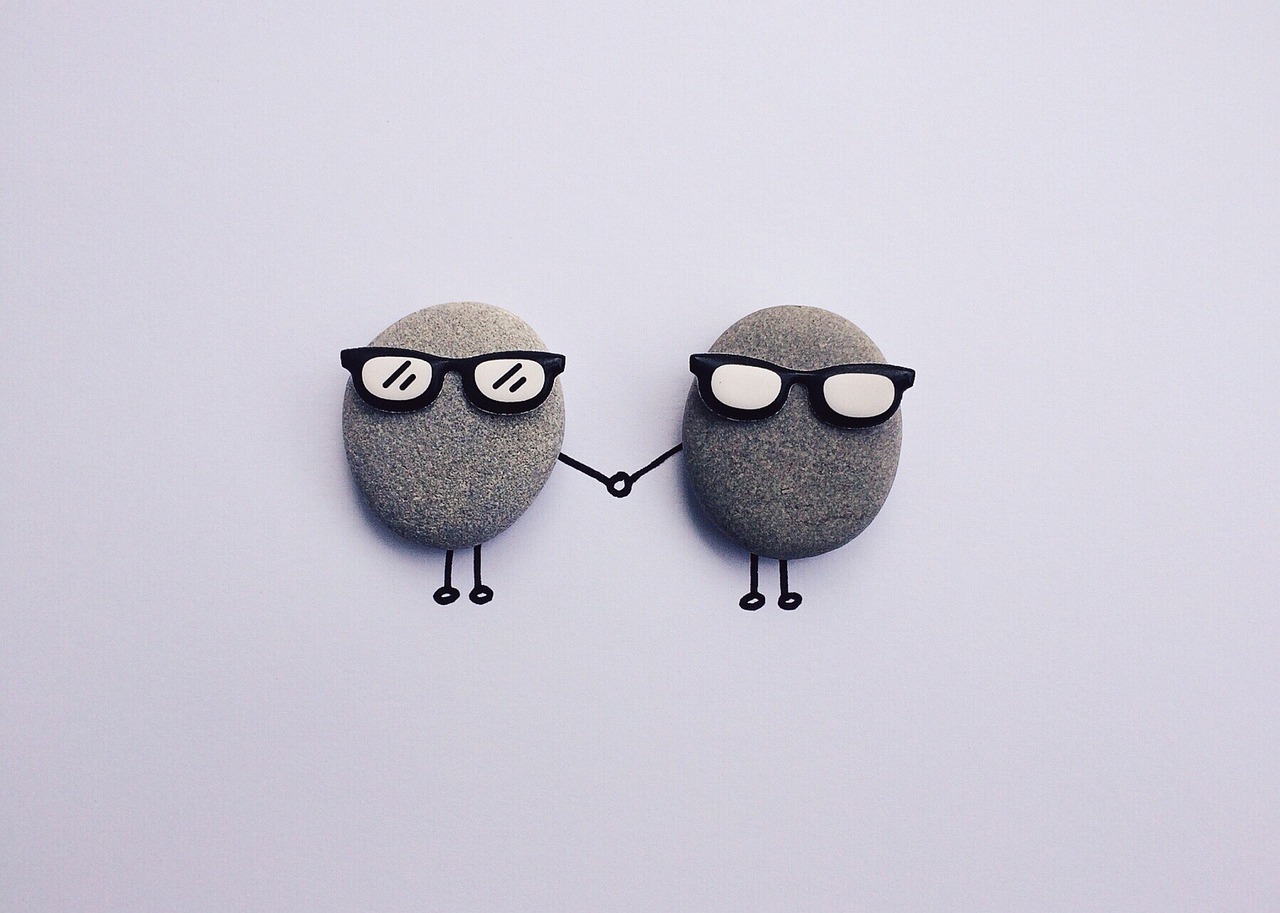
Sharing Treasure Maps
Once the treasure maps are complete, it’s time for the real adventure to begin! Sharing these unique creations with friends and family can turn a simple craft into an exciting storytelling experience. Imagine the thrill as kids gather around, each presenting their own meticulously crafted map, filled with clues and hidden treasures. This activity not only fosters creativity but also enhances social interaction, allowing children to engage in collaborative play.
Encouraging kids to share their maps can lead to interactive games where they might even embark on a treasure hunt together! They can take turns being the 'captain' who leads the crew to find the hidden loot based on the clues provided. This not only makes the experience more immersive but also teaches teamwork and communication skills. Kids can ask each other questions about their maps, sparking discussions that enhance their storytelling abilities.
To make sharing even more engaging, consider organizing a Treasure Map Exhibition at home or in the backyard. Here’s how you can set it up:
- Invite Friends: Ask a few friends over for a pirate-themed gathering.
- Set Up a Display: Create a space where each child can display their treasure map.
- Treasure Hunt Game: Plan a treasure hunt based on the maps, where each child gets to lead their friends to a hidden treasure.
This exhibition not only showcases their hard work but also allows them to take pride in their creativity. Plus, it’s a fantastic way for parents to witness the imaginative worlds their children have created. Sharing treasure maps can transform a simple craft into an unforgettable adventure, full of laughter and excitement. So, gather those maps, invite some friends, and let the treasure hunting begin!
| Question | Answer |
|---|---|
| What materials do I need to create a treasure map? | You will need parchment paper, markers, stickers, and any other decorative items you want to use. |
| How can I encourage my child to share their treasure map? | Organize a small gathering where kids can present their maps or create a treasure hunt based on their clues. |
| What age group is this craft suitable for? | This craft is suitable for children aged 5 and up, with adult supervision for younger kids. |
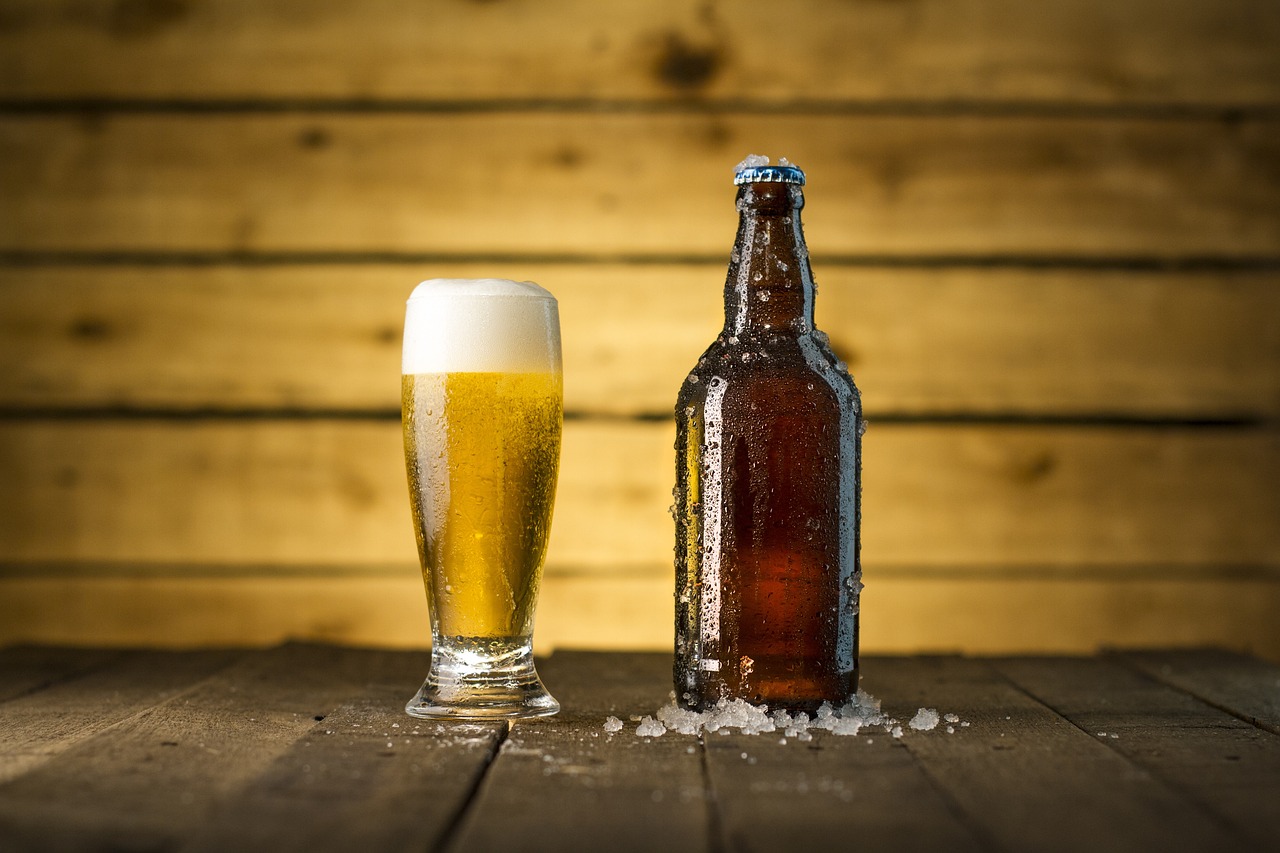
Crafting Pirate Flags
Crafting pirate flags is an exhilarating way for kids to express their creativity while diving into the adventurous world of pirates. Imagine your child waving their very own flag high, a symbol of their unique pirate persona! This craft not only allows for artistic expression but also teaches children about symbolism and what it means to represent something. Each flag can tell a story, and the designs can be as wild and imaginative as their pirate adventures.
When it comes to choosing flag designs, the options are as vast as the open sea! Kids can explore various designs, from classic skull and crossbones to more whimsical interpretations of pirate lore. They can select colors and shapes that resonate with their personality—perhaps a fierce red flag for a bold pirate or a mysterious black flag for a stealthy sea rogue. This process encourages children to think deeply about what their flag represents, allowing them to connect their creativity with their understanding of symbolism.
Additionally, crafting a flagpole adds another layer of excitement to this project. Using simple materials like wooden dowels or even sturdy cardboard, kids can build their own flagpoles, thus learning basic construction skills. This hands-on experience not only enhances the presentation of their flags but also instills a sense of accomplishment. Imagine the pride on their faces when they see their creations flying high!
To make this craft even more engaging, consider incorporating a mini flag design competition among friends or family. This can be a fun way to foster creativity and encourage kids to share their ideas. They can even vote on their favorite designs, making it a memorable event filled with laughter and camaraderie. Plus, it’s a fantastic opportunity for kids to practice their presentation skills as they explain the meaning behind their unique flags.
In summary, crafting pirate flags is not just about creating a piece of art; it’s about storytelling, symbolism, and personal expression. Whether they choose to wave their flags during imaginative play or display them in their rooms, these flags will serve as a constant reminder of their adventurous spirit. So gather the materials, unleash the creativity, and let the pirate flag crafting adventure begin!
- What materials do I need to craft a pirate flag? You will need fabric or paper, scissors, markers or paint, and a flagpole (wooden dowel or cardboard). Optional decorations include glitter, stickers, or fabric scraps for added flair.
- How can I help my child choose a design for their flag? Encourage them to think about their favorite pirate stories or characters. They can sketch out ideas and choose colors that represent their personality.
- Can we use recycled materials for this craft? Absolutely! Using recycled materials not only fosters creativity but also teaches resourcefulness. Items like old t-shirts, cardboard boxes, and leftover craft supplies can be great for making pirate flags.
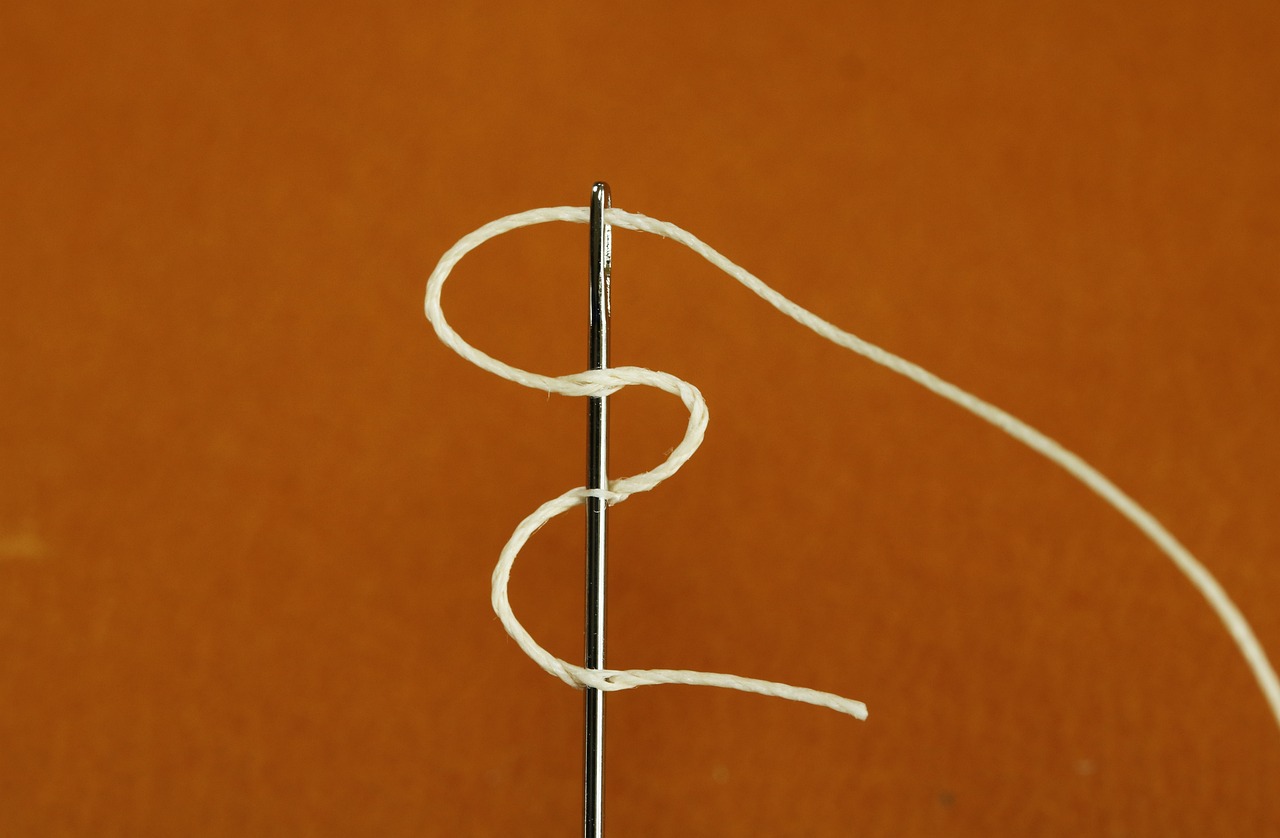
Choosing Flag Designs
Discover exciting and creative pirate-themed crafts that will engage children in imaginative play. These projects are perfect for enhancing fine motor skills while sparking adventure and creativity.
Making pirate hats is a fun and simple craft that encourages creativity. Kids can personalize their hats with decorations, helping them immerse themselves in their pirate adventures.
Kids can create their own treasure maps, fostering storytelling and imaginative play. This craft allows them to explore geography while incorporating their unique adventures and discoveries.
Gathering materials like parchment paper, markers, and stickers enhances the treasure map-making experience. Using various supplies encourages creativity and ensures every map is one-of-a-kind.
Incorporating clues and landmarks into their maps makes the adventure more engaging. Kids can brainstorm creative ideas that lead to hidden treasures, enhancing their problem-solving skills.
Decorating maps with pirate symbols like skulls and crossbones adds flair. This encourages children to research pirate lore, enriching their craft experience with historical knowledge.
Once completed, kids can share their treasure maps with friends or family. This activity promotes social interaction and storytelling, making their pirate adventures even more exciting.
Kids can design their own pirate flags, allowing them to express individuality. This craft combines creativity with an understanding of symbolism, as they choose designs that represent their pirate persona.
Exploring different designs for pirate flags helps children learn about creativity and symbolism. They can select colors and shapes that resonate with their unique pirate identity. For instance, a classic black flag with a white skull and crossbones is iconic, but kids can also experiment with vibrant colors and personal symbols that reflect their adventurous spirit. This process not only fosters artistic expression but also allows them to connect with the lore of pirates throughout history.
To help guide their design choices, here are some popular flag design elements that children might consider:
- Colors: Traditional pirate flags often use black, white, and red, but kids can choose any color that speaks to them.
- Symbols: Common pirate symbols include skulls, swords, treasure chests, and nautical elements like anchors.
- Patterns: Stripes, stars, or even their own drawings can add a personal touch to their flags.
Encouraging kids to think critically about their flag designs can lead to discussions about what each element represents. For instance, they might choose a red background to symbolize bravery or a skull to represent adventure and danger on the high seas. This blend of creativity and symbolism not only enhances their crafting experience but also nurtures their understanding of storytelling through visual art.
Building a flagpole from simple materials adds another layer to this craft. It teaches kids basic construction skills while enhancing the presentation of their pirate flags.
Creating pirate costumes allows kids to fully immerse themselves in their pirate adventures. This craft promotes imaginative play and encourages teamwork when they collaborate on costume creation.
Selecting materials for pirate costumes, such as fabric scraps and accessories, encourages resourcefulness. Kids can learn to repurpose items, fostering creativity and sustainability.
Adding props like swords and eye patches enhances the pirate experience. This encourages imaginative play, allowing children to enact their pirate stories with confidence and flair.
Q: What age group is suitable for these pirate-themed crafts?
A: These crafts are perfect for children aged 5 and up, but younger kids can participate with adult supervision.
Q: Do I need to buy special materials for these crafts?
A: Not at all! Most materials can be found around the house or at local craft stores. Think of items like cardboard, fabric scraps, and markers!
Q: How can I encourage my child to be more creative with these crafts?
A: Encourage them to add personal touches to their projects, like unique designs or stories behind their creations. Ask open-ended questions that stimulate their imagination.
Q: Can these crafts be done in a group setting?
A: Yes! These crafts are great for playdates, birthday parties, or school projects. They promote teamwork and social interaction.
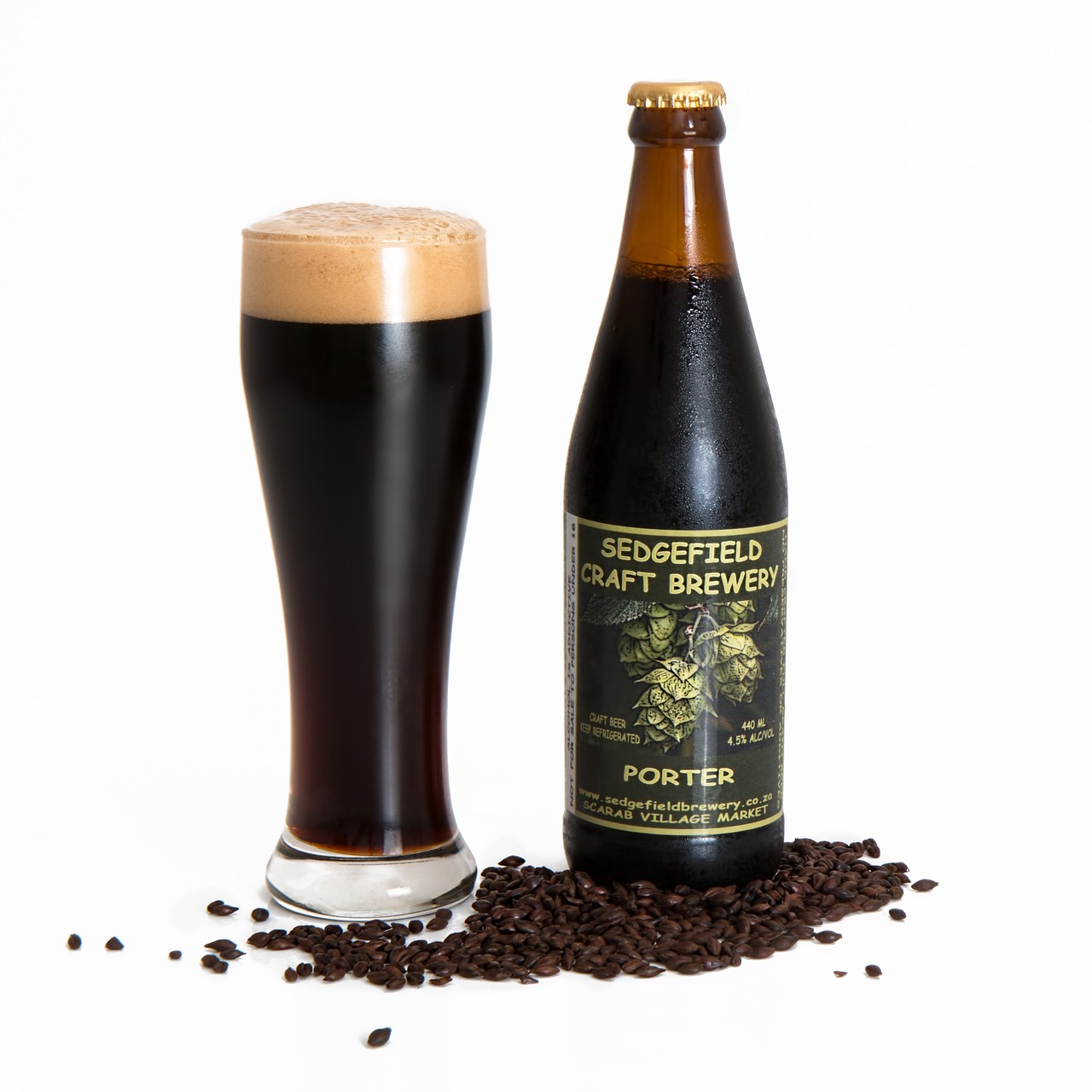
Creating a Flagpole
Building a pirate flagpole is not only an exciting extension of the flag-making project, but it also introduces kids to basic construction skills in a fun and engaging way. Imagine your little adventurers, armed with creativity, transforming everyday materials into a towering structure that proudly displays their handmade flags. It's like crafting a mini monument to their pirate persona! The beauty of this craft lies in its simplicity and the joy it brings as children watch their creations come to life.
To start, gather some common materials that you probably already have around the house. Here’s a quick list of what you’ll need:
- A sturdy stick or dowel - This will serve as the main pole.
- String or twine - To attach the flag securely to the pole.
- Paint or markers - For decorating the pole, giving it a personal touch.
- Scissors - To cut the string and any other materials.
- Glue or tape - To secure any decorations you want to add.
Once you have your materials ready, it's time to get to work! Start by deciding how tall you want your flagpole to be. A good height for kids is around three feet, which is manageable for them to handle and display their flags. Cut your stick or dowel to the desired length if needed. Next, let the kids unleash their creativity by decorating the pole. They can use paint, markers, or even stickers to give it a unique flair. This step is not only fun but also allows them to express their individuality.
After decorating, it’s time to attach the flag to the pole. Cut a length of string or twine, depending on how long you want the flag to hang. Tie one end of the string to the top of the pole and the other end to the flag. Make sure it’s secure, so their flag flies high and proud! As they work on this, encourage them to think about how a pirate would display their colors on the high seas, creating a sense of adventure and excitement.
Finally, find a suitable base for the flagpole. This could be a small pot filled with sand or rocks, or even a block of wood. This base will ensure that the flagpole stands tall and doesn’t topple over in the wind. Kids can decorate the base as well, adding to the overall pirate theme. The finished product will not only be a beautiful display of their creativity but also a fantastic prop for their imaginative play.
By creating a flagpole, children learn valuable skills such as teamwork, problem-solving, and resourcefulness. They’ll have a blast showing off their flags and sharing stories about their pirate adventures. So, gather those materials and let the pirate-themed fun begin!
Q: What materials are best for making a flagpole?
A: Sturdy sticks or dowels work best. You can also use PVC pipes for a more durable option.
Q: Can we make a flagpole indoors?
A: Absolutely! Just make sure to use a base that won’t damage your floors, like a pot filled with sand.
Q: How can we decorate the flagpole?
A: Kids can use paint, markers, stickers, or even fabric scraps to make it colorful and unique!
Q: Is this activity suitable for all ages?
A: Yes, with adult supervision for younger children, this craft can be enjoyed by kids of all ages!
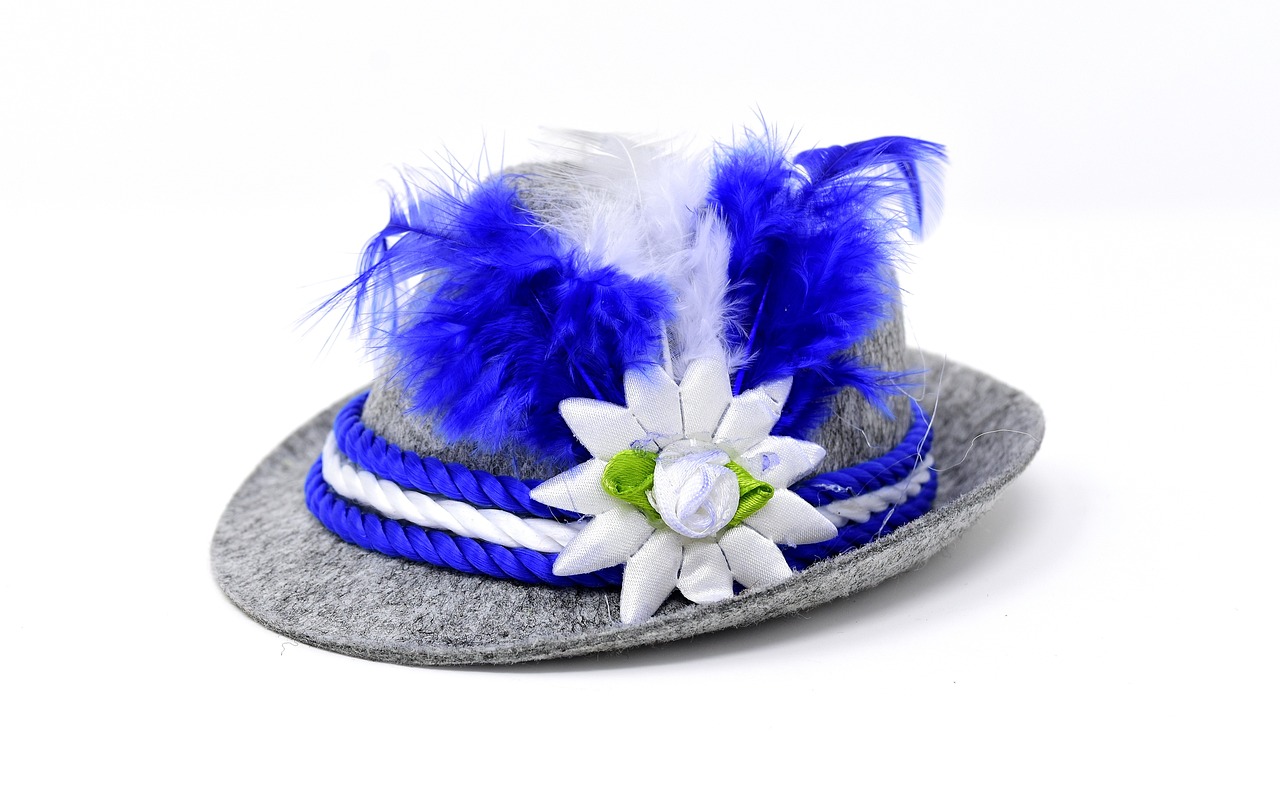
Making DIY Pirate Costumes
Creating DIY pirate costumes is not just a fun project; it’s an exciting adventure that allows kids to fully immerse themselves in their swashbuckling fantasies. Picture this: your child, decked out in a pirate outfit, ready to sail the seven seas of their imagination! This craft promotes imaginative play and can even foster teamwork when kids collaborate on costume creation. So, let’s dive into the world of pirate attire!
First things first, choosing the right materials is crucial. Kids can rummage through old clothes, fabric scraps, and even accessories lying around the house to create their unique pirate look. Think about using items like:
- Old shirts or tunics (preferably in dark colors)
- Bandanas or scarves for headgear
- Fabric scraps for vests or sashes
- Boots or sturdy shoes that can withstand some rough play
Once the materials are gathered, it’s time to get creative! Encourage kids to repurpose these items. For instance, an old shirt can be transformed into a pirate tunic with a few snips and some creative stitching. This not only teaches resourcefulness but also promotes creativity and sustainability. They can even add some fringe to the sleeves for that authentic pirate flair!
Accessorizing is where the magic truly happens. Adding props like swords, eye patches, and even toy parrots can enhance the overall pirate experience. Imagine your child wielding a cardboard sword, ready to defend their treasure against imaginary foes! These props allow them to enact their pirate stories with confidence and flair, making their playtime even more engaging.
And let’s not forget about the importance of teamwork! If siblings or friends are involved, they can collaborate on creating a pirate crew. They can each design their costumes, choosing different styles and accessories that reflect their unique personalities. This collaboration not only makes the crafting process more enjoyable but also strengthens their bonds as they work together toward a common goal.
To wrap things up, making DIY pirate costumes is a fantastic way to blend creativity with play. It allows kids to express their individuality while diving headfirst into a world of adventure. So gather those materials, let their imaginations run wild, and watch as they transform into the most daring pirates on the high seas!
Q1: What materials do I need to make a pirate costume?
A1: You can use old clothes, fabric scraps, bandanas, and accessories like belts or boots. Get creative with what you have at home!
Q2: How can I make a pirate sword?
A2: A simple pirate sword can be made from cardboard. Cut out the shape of a sword, decorate it with paint or markers, and you’re ready to go!
Q3: Can kids work together on this project?
A3: Absolutely! This craft is perfect for teamwork. Kids can collaborate on designing their costumes and accessories, making it a fun group activity.
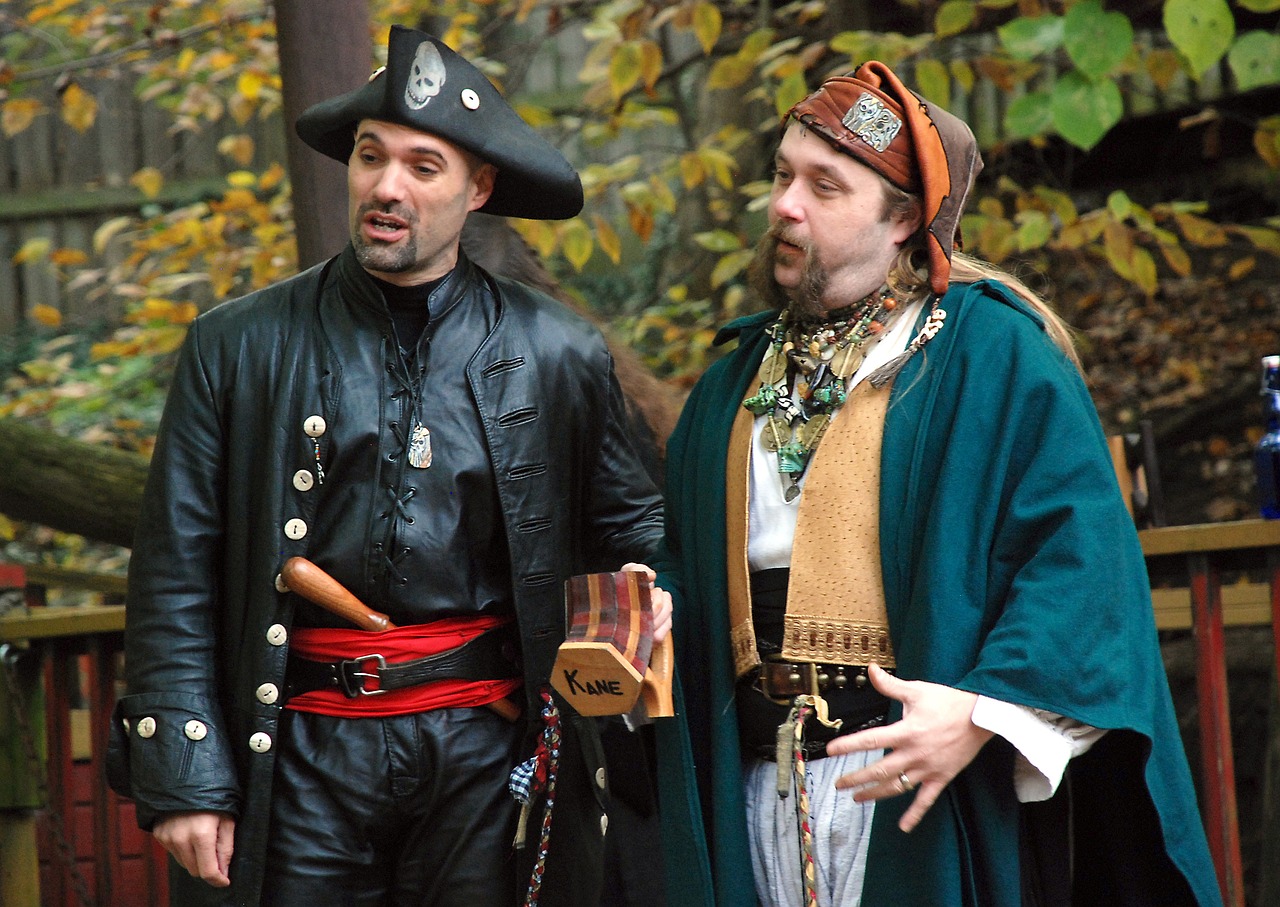
Choosing Costume Materials
Discover exciting and creative pirate-themed crafts that will engage children in imaginative play. These projects are perfect for enhancing fine motor skills while sparking adventure and creativity.
Making pirate hats is a fun and simple craft that encourages creativity. Kids can personalize their hats with decorations, helping them immerse themselves in their pirate adventures.
Kids can create their own treasure maps, fostering storytelling and imaginative play. This craft allows them to explore geography while incorporating their unique adventures and discoveries.
Gathering materials like parchment paper, markers, and stickers enhances the treasure map-making experience. Using various supplies encourages creativity and ensures every map is one-of-a-kind.
Incorporating clues and landmarks into their maps makes the adventure more engaging. Kids can brainstorm creative ideas that lead to hidden treasures, enhancing their problem-solving skills.
Decorating maps with pirate symbols like skulls and crossbones adds flair. This encourages children to research pirate lore, enriching their craft experience with historical knowledge.
Once completed, kids can share their treasure maps with friends or family. This activity promotes social interaction and storytelling, making their pirate adventures even more exciting.
Kids can design their own pirate flags, allowing them to express individuality. This craft combines creativity with an understanding of symbolism, as they choose designs that represent their pirate persona.
Exploring different designs for pirate flags helps children learn about creativity and symbolism. They can select colors and shapes that resonate with their unique pirate identity.
Building a flagpole from simple materials adds another layer to this craft. It teaches kids basic construction skills while enhancing the presentation of their pirate flags.
Creating pirate costumes allows kids to fully immerse themselves in their pirate adventures. This craft promotes imaginative play and encourages teamwork when they collaborate on costume creation.
When it comes to choosing materials for pirate costumes, the options are as vast as the seven seas! Kids can dive into their creativity by selecting from a treasure trove of items. Fabric scraps, old shirts, and even bed sheets can be transformed into swashbuckling attire. The beauty of this craft is in its resourcefulness; it teaches children to look at everyday items in a new light. For instance, a simple black shirt can become a pirate's tunic, while a red bandana can be fashioned into a stylish headpiece.
Consider incorporating various textures and colors to make the costumes pop. **Fabrics** like velvet or cotton can add a touch of authenticity, while **accessories** such as belts, faux leather, and even costume jewelry can enhance the overall look. Kids can also explore using items from nature, such as leaves or flowers, to create unique embellishments. The possibilities are endless!
Furthermore, it’s a great opportunity for kids to learn about sustainability. By repurposing materials, they can create stunning costumes without breaking the bank. This not only fosters creativity but also instills an appreciation for the environment. So, gather those old clothes and let the adventure begin!
Adding props like swords and eye patches enhances the pirate experience. This encourages imaginative play, allowing children to enact their pirate stories with confidence and flair.
- What age group is suitable for these crafts?
These crafts are ideal for children aged 5-12, but younger kids can participate with adult supervision. - Do I need special materials for these crafts?
No special materials are required! Most items can be found around the house or at local craft stores. - Can these crafts be done in a group setting?
Absolutely! They are perfect for playdates, birthday parties, or classroom activities. - How can I make these crafts more educational?
Incorporate lessons on history, storytelling, or even geography while crafting to enhance the learning experience.
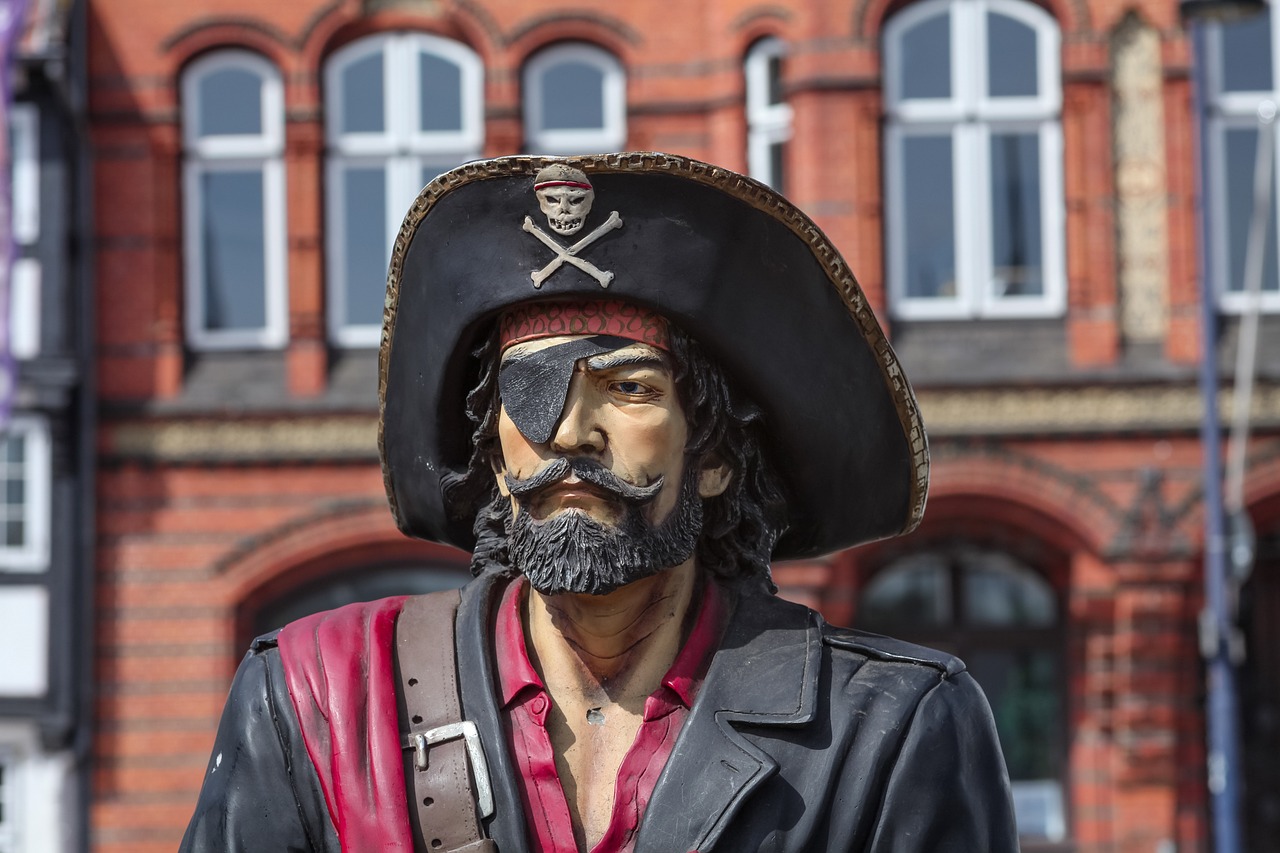
Accessorizing with Pirate Props
Discover exciting and creative pirate-themed crafts that will engage children in imaginative play. These projects are perfect for enhancing fine motor skills while sparking adventure and creativity.
Making pirate hats is a fun and simple craft that encourages creativity. Kids can personalize their hats with decorations, helping them immerse themselves in their pirate adventures.
Kids can create their own treasure maps, fostering storytelling and imaginative play. This craft allows them to explore geography while incorporating their unique adventures and discoveries.
Gathering materials like parchment paper, markers, and stickers enhances the treasure map-making experience. Using various supplies encourages creativity and ensures every map is one-of-a-kind.
Incorporating clues and landmarks into their maps makes the adventure more engaging. Kids can brainstorm creative ideas that lead to hidden treasures, enhancing their problem-solving skills.
Decorating maps with pirate symbols like skulls and crossbones adds flair. This encourages children to research pirate lore, enriching their craft experience with historical knowledge.
Once completed, kids can share their treasure maps with friends or family. This activity promotes social interaction and storytelling, making their pirate adventures even more exciting.
Kids can design their own pirate flags, allowing them to express individuality. This craft combines creativity with an understanding of symbolism, as they choose designs that represent their pirate persona.
Exploring different designs for pirate flags helps children learn about creativity and symbolism. They can select colors and shapes that resonate with their unique pirate identity.
Building a flagpole from simple materials adds another layer to this craft. It teaches kids basic construction skills while enhancing the presentation of their pirate flags.
Creating pirate costumes allows kids to fully immerse themselves in their pirate adventures. This craft promotes imaginative play and encourages teamwork when they collaborate on costume creation.
Selecting materials for pirate costumes, such as fabric scraps and accessories, encourages resourcefulness. Kids can learn to repurpose items, fostering creativity and sustainability.
What’s a pirate without their trusty props? Adding accessories like swords, eye patches, and treasure chests can transform any child into a daring buccaneer ready for adventure. Imagine the thrill of wielding a foam sword while shouting, “Arrr, matey!” It’s not just about looking the part; these props enhance the overall experience, allowing kids to enact their pirate stories with confidence and flair.
To create a truly immersive pirate experience, consider the following props:
- Foam Swords: Safe and perfect for sword fights on the high seas.
- Eye Patches: A classic pirate accessory that adds mystery and charm.
- Treasure Chests: Use small boxes painted gold to store their 'booty'.
- Binoculars: Craft simple binoculars from toilet paper rolls for ‘spyglass’ adventures.
These accessories not only encourage imaginative play but also foster creativity as kids can customize their props. For instance, they can decorate their swords with stickers or paint, making each item uniquely theirs. Plus, engaging in pirate-themed role-play can enhance their storytelling abilities, as they create scenarios that require them to think on their feet. The sky's the limit when it comes to creativity, so let their imaginations run wild!
Q1: What age group is suitable for these pirate-themed crafts?
A1: These crafts are perfect for children aged 5-12, but younger kids may also enjoy them with adult supervision.
Q2: How long do these crafts typically take to complete?
A2: Most crafts can be completed in 30 minutes to 1 hour, depending on the complexity and the child's engagement level.
Q3: Can these crafts be done indoors?
A3: Absolutely! These crafts are great for indoor activities, especially on rainy days.
Q4: Do I need special materials to start these crafts?
A4: Not at all! Most materials are household items or can be easily found at craft stores.
Q5: Can these crafts be used for a pirate-themed party?
A5: Yes! These crafts are perfect for pirate-themed parties and can serve as fun activities for guests.
Frequently Asked Questions
- What materials do I need for pirate-themed crafts?
To embark on your pirate crafting adventure, gather materials like construction paper, markers, scissors, glue, fabric scraps, and any decorative items like stickers or beads. For treasure maps, don't forget parchment paper and maybe some tea bags to give it that aged look!
- How can I encourage my kids to be creative with their pirate hats?
Encourage your kids to personalize their pirate hats by using various decorations. They can draw, paint, or even add feathers and beads! Let them express their unique pirate persona, making each hat a true reflection of their imagination.
- What age group is suitable for these pirate crafts?
These pirate-themed crafts are perfect for kids aged 4 and up! Younger children may need some assistance, but the projects are designed to be fun and engaging for a wide range of ages. Plus, it's a great way for parents to bond with their kids!
- How can treasure maps enhance learning?
Creating treasure maps can teach kids about geography, storytelling, and problem-solving. As they draw their maps, they’ll learn to identify landmarks and think critically about how to lead others to their hidden treasures.
- Can we use recycled materials for pirate costumes?
Absolutely! Using recycled materials not only fosters creativity but also teaches kids about sustainability. Fabric scraps, old clothes, and even cardboard can be transformed into amazing pirate costumes. It's all about thinking outside the box!
- What are some fun accessories to include with pirate costumes?
Accessorizing is key to a great pirate look! Think eye patches, toy swords, bandanas, and even homemade treasure chests. These props can spark imaginative play, allowing kids to dive deep into their pirate adventures!
- How can kids share their treasure maps with others?
Once the treasure maps are complete, kids can host a treasure hunt! They can invite friends or family to join in the adventure, sharing their maps and leading them to the hidden treasures. It’s a fantastic way to encourage social interaction and storytelling!



















